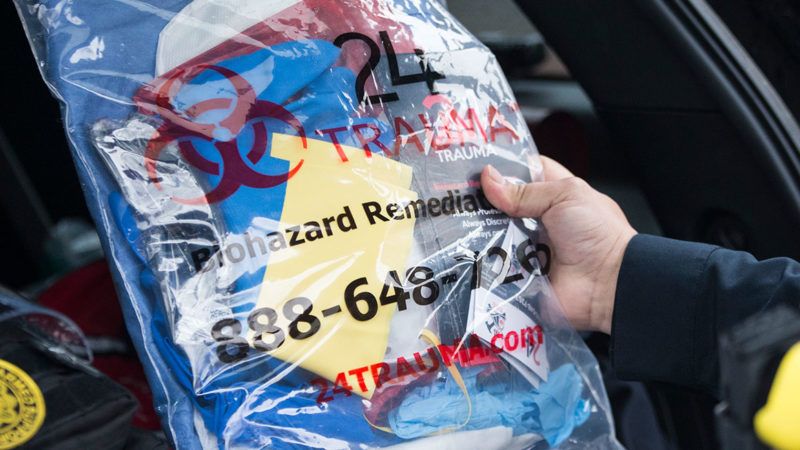The Feds Are Spreading Fake Facts About Fentanyl
While fentanyl is a dangerous drug, it is very difficult to overdose on it through accidental exposure.

Police officers in Texas heard some terrifying news on June 26, 2018: Anti-government flyers poisoned with a deadly opioid had been placed on Harris County Sheriff's Office squad cars, and a sergeant who had touched one was en route to the hospital with overdose symptoms. The incident set off a flurry of media coverage, and police as far away as Maine and Massachusetts received alerts about it.
Only it wasn't true. Three days later, a laboratory analysis found there was in fact no fentanyl on the flyers. The Harris County Sheriff's Office blamed the panic on a problem with field test kits.
Fentanyl, a synthetic opioid that is 50 to 100 times more potent than morphine, is involved in nearly half of drug-related deaths in the United States, according to the National Center for Health Statistics. Among law enforcement agencies, it has taken on quasi-magical properties. First responders around the country have claimed they nearly died from accidental exposure, based on the scientifically inaccurate idea that a fatal amount of fentanyl can pass through human skin or poison the air.
That misconception has spread through a surprising avenue: America's counterterrorism agencies. Police documents released as part of "BlueLeaks," a massive trove of law enforcement data obtained by the hacker collective Anonymous, show that fusion centers—local liaison offices set up by the Department of Homeland Security in the wake of 9/11—have circulated fentanyl misinformation, panicking police officers and wasting first responders' time.
A 2012 U.S. Senate report found that fusion centers had spent as much as $1.2 billion to provide "oftentimes shoddy" and "rarely timely" information. Out of 121 fentanyl-related bulletins in the BlueLeaks trove, at least 36 claimed that fentanyl could be absorbed through the skin and at least 41 discussed the alleged danger of airborne fentanyl.
Some of the documents originated in the High Intensity Drug Trafficking Area (HIDTA) program, which shares information between local law enforcement and the Office of National Drug Control Policy. All bulletins about fentanyl from Arizona's HIDTA office between May 2015 and January 2018—documents that were sometimes shared by California fusion centers—came with a warning that fentanyl "can be fatal if swallowed, inhaled or absorbed through the skin."
While fentanyl is a dangerous drug, it is very difficult to overdose on it through accidental exposure. The fentanyl patches used by cancer patients require moisture for the drug to be gradually absorbed through the skin. And someone would have to stand near an industrial-sized concentration of fentanyl for more than two and a half hours to feel the effects of airborne exposure, according to the American College of Medical Toxicology.
"Law enforcement bulletins regarding fentanyl have changed over time," a spokesperson for Arizona's HIDTA says in response to questions about the accuracy of its advice. "Information received by law enforcement over the past five years regarding fentanyl exposure is continually updated."
The more myths about fentanyl spread, the more officers in the field panicked, convinced they had fallen victim to accidental overdoses. One state trooper was responding to an overdose in Sussex County, Delaware, when he suddenly experienced "an accelerated heart rate," "lightheadedness," and "a tingling sensation in his legs," according to an October 2018 bulletin from the Delaware Information & Analysis Center, that state's fusion center.
These are symptoms of anxiety, not an opioid overdose. But the Delaware trooper was rushed to the hospital and "treated" with the opioid antagonist naloxone. The Delaware Information & Analysis Center, which warned officers "to treat all unknown substances as if they could be deadly if inhaled or absorbed through the skin," did not respond to a request for comment.
Public "paranoia" about accidental fentanyl exposure has caused first responders to "waste" naloxone, the Young Physicians Section of the American Medical Association complained in a 2019 resolution. "Stigma of opioid abuse and overdose has already made first responders reluctant to intervene in a timely manner when someone is suspected of overdosing," the group further warned.
The federal government released accurate fentanyl guidelines in November 2017 and followed up with an instructional video in August 2018. But misinformation about opioids continues to compromise America's response to illicit fentanyl.
